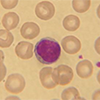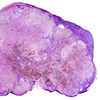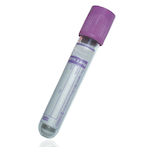Infectious Mononucleosis Screening Test
Specimen Volume
4mLSpecimen Transport
Standard transport to laboratorySample Preparation
None
Turnaround Time
24 hoursSample Stability
2-8C for 48 hoursGeneral Information
Samples that meet the following criteria will not be processed:
- Samples with less than 50 µl plasma/serum.
- Specimens which are contaminated or grossly haemolysed.
- Samples which fail the Minimum Data Set.
Assay Limitations:
- The results obtained by this kit yield data which must be used only in addition to other information available to the physician.
- Although most patients will have a detectable heterophile antibody level within three weeks of infection, occasionally a patient with strong clinical signs of IM may take longer than three months to develop a detectable level. If further testing is desired, collect additional specimens every few days and retest.
- Some segments of the population who contract IM do not produce measurable levels of heterophile antibody. Approximately 50% of children under 4 years of age who have IM may test as IM heterophile antibody negative. EBV-specific laboratory diagnosis may be helpful in these cases.
- Some individuals are reported to maintain a low but persistent level of heterophile antibodies long after their primary illness. Heterophile antibodies have been detected in blood specimens taken more than one year after the onset of the illness. Such false positive test results occurring in 2-3% of patients can be excluded by EBV-specific serology.
- The IM heterophile antibody has been associated with disease states other than IM, such as leukaemia, cytomegalovirus, Burkitt’s lymphoma, rheumatoid arthritis, adenovirus, viral hepatitis, and Toxoplasma gondii. In primary infections of adults with clinically atypical diseases, EBV-specific laboratory diagnosis may also be helpful.
For more information please see https://labtestsonline.org.uk/tests/monospot-test
Notes
The test detects the presence of primarily IgM heterophile antibodies which can usually be detected in glandular fever.
Specifications
- EQA Status: Pilot Study - NEQAS
- EQAS Scheme: No








